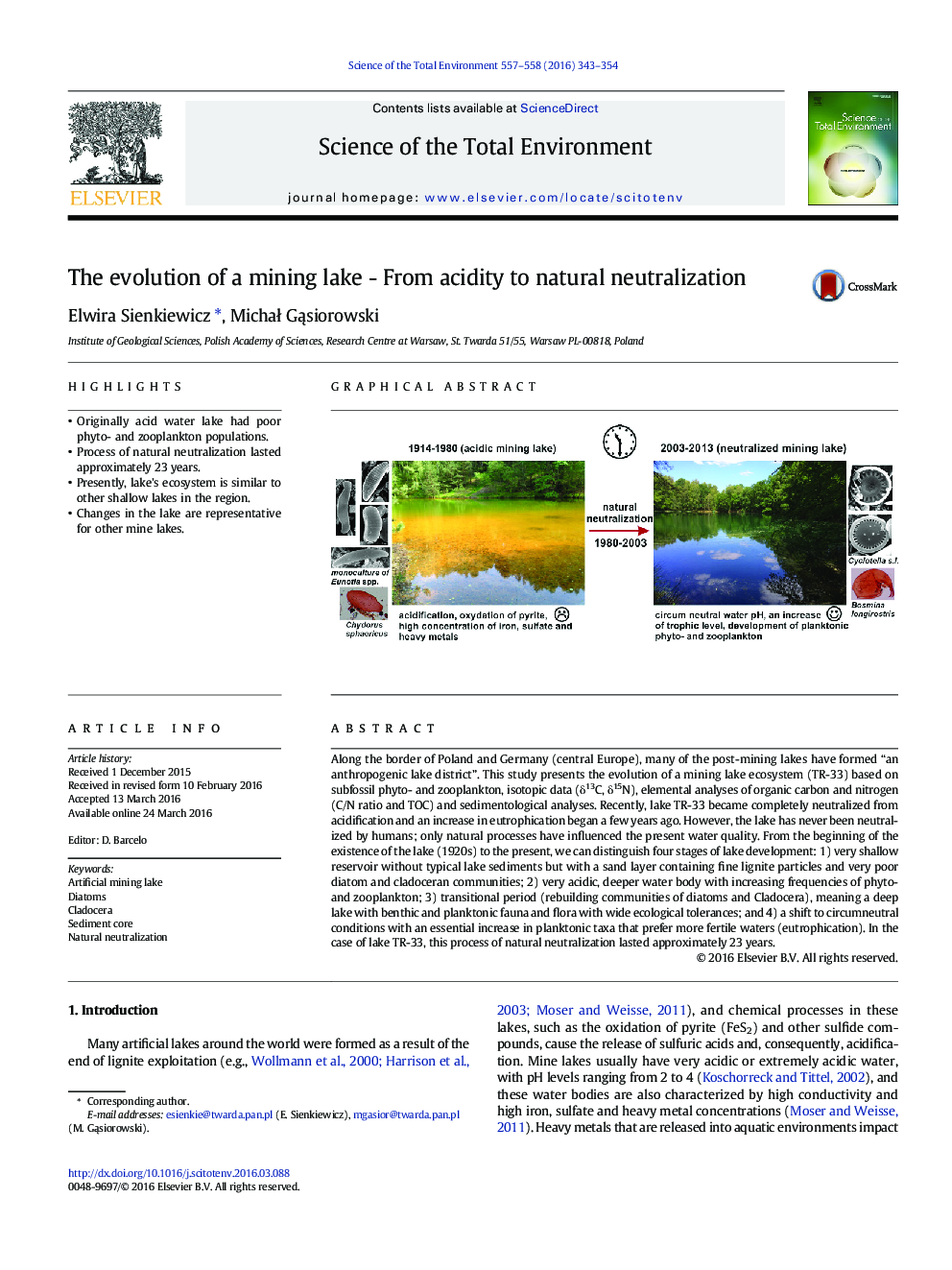| Article ID | Journal | Published Year | Pages | File Type |
|---|---|---|---|---|
| 6322503 | Science of The Total Environment | 2016 | 12 Pages |
â¢Originally acid water lake had poor phyto- and zooplankton populations.â¢Process of natural neutralization lasted approximately 23 years.â¢Presently, lake's ecosystem is similar to other shallow lakes in the region.â¢Changes in the lake are representative for other mine lakes.
Along the border of Poland and Germany (central Europe), many of the post-mining lakes have formed “an anthropogenic lake district”. This study presents the evolution of a mining lake ecosystem (TR-33) based on subfossil phyto- and zooplankton, isotopic data (δ13C, δ15N), elemental analyses of organic carbon and nitrogen (C/N ratio and TOC) and sedimentological analyses. Recently, lake TR-33 became completely neutralized from acidification and an increase in eutrophication began a few years ago. However, the lake has never been neutralized by humans; only natural processes have influenced the present water quality. From the beginning of the existence of the lake (1920s) to the present, we can distinguish four stages of lake development: 1) very shallow reservoir without typical lake sediments but with a sand layer containing fine lignite particles and very poor diatom and cladoceran communities; 2) very acidic, deeper water body with increasing frequencies of phyto- and zooplankton; 3) transitional period (rebuilding communities of diatoms and Cladocera), meaning a deep lake with benthic and planktonic fauna and flora with wide ecological tolerances; and 4) a shift to circumneutral conditions with an essential increase in planktonic taxa that prefer more fertile waters (eutrophication). In the case of lake TR-33, this process of natural neutralization lasted approximately 23 years.
Graphical abstractDownload high-res image (571KB)Download full-size image
